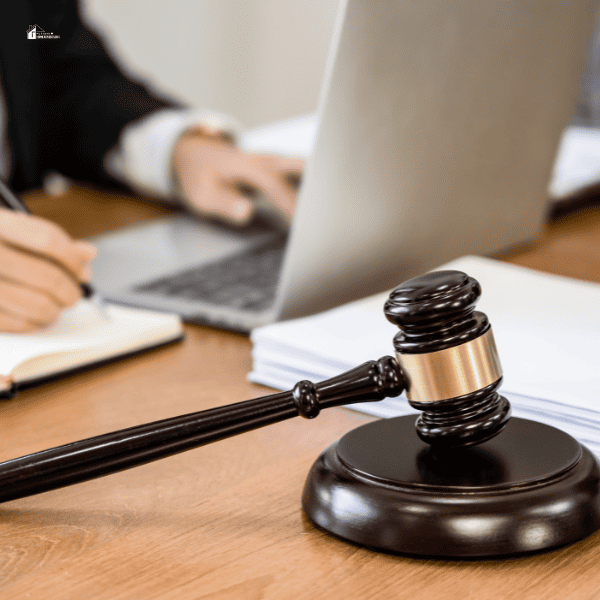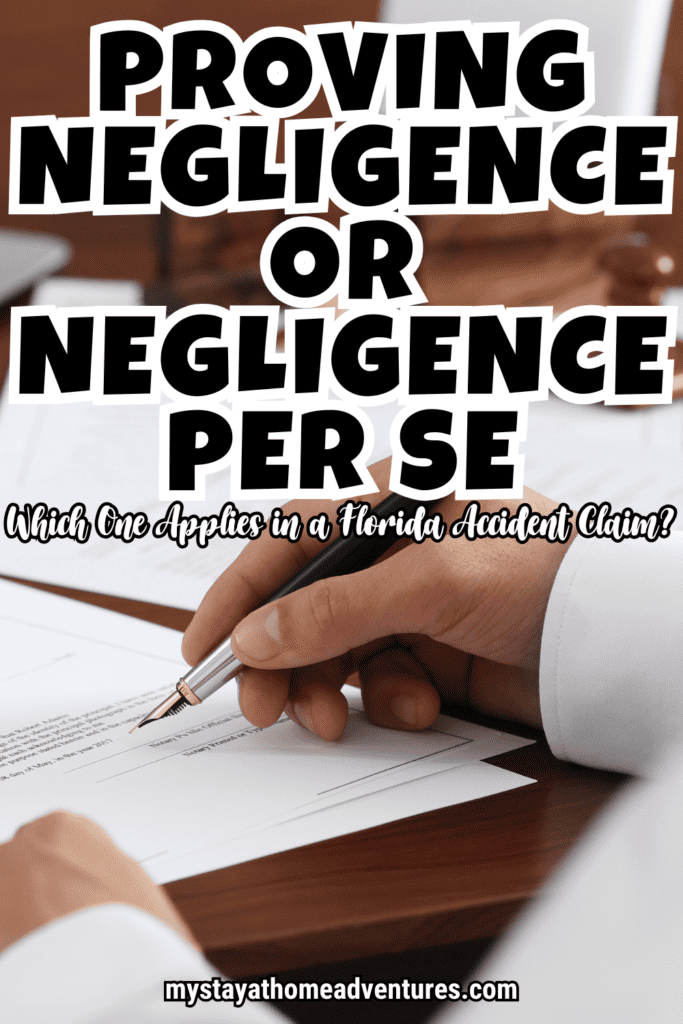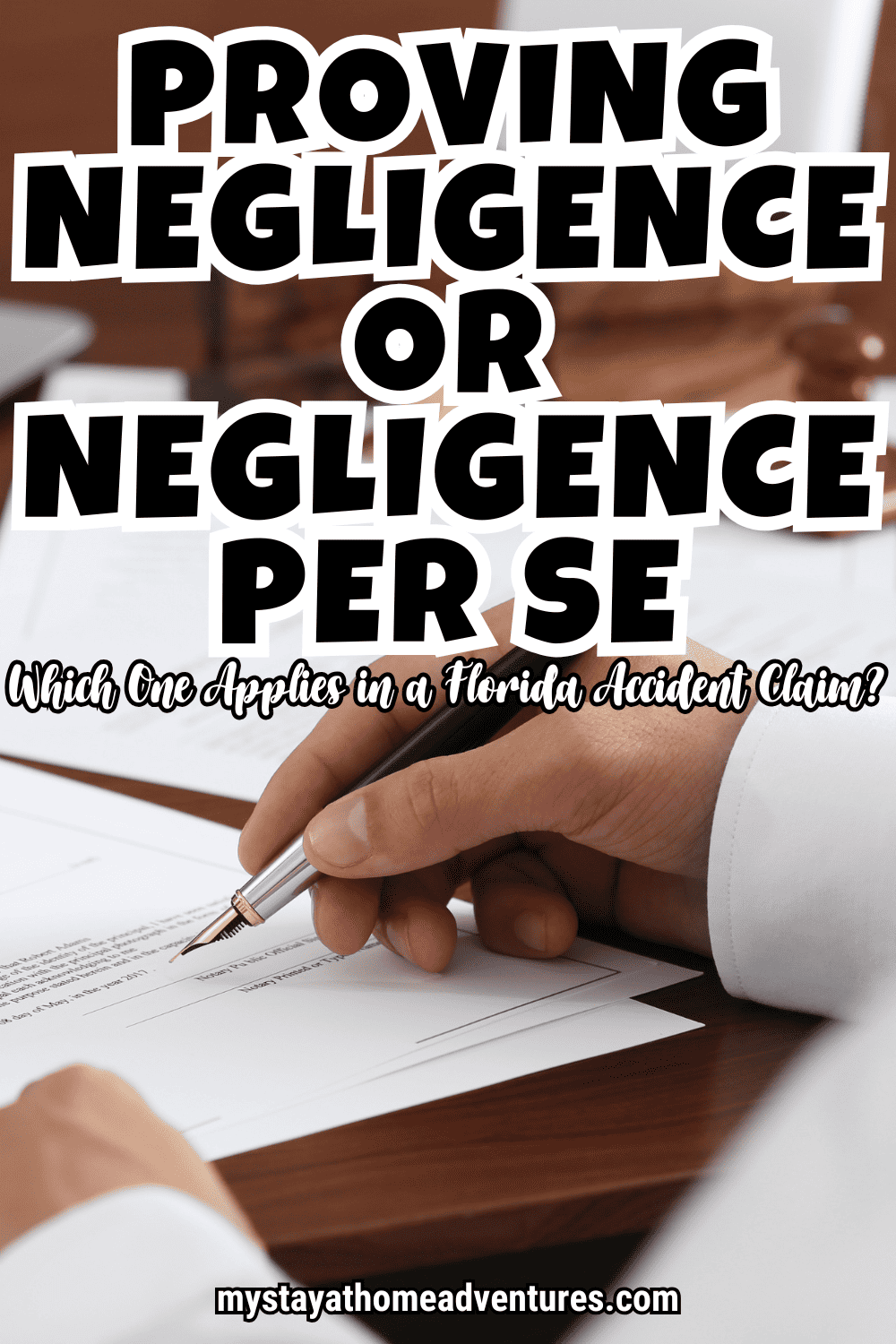Proving Negligence or Negligence Per Se: Which One Applies in a Florida Accident Claim?
This post may contain affiliate links which might earn us money. Please read my Disclosure and Privacy policies hereHave you ever noticed some legal terms have an annoying habit of sounding fairly similar? For laypeople, this can add unnecessary stress when it’s time to file a personal injury claim after an accident. You have enough on your plate without worrying about understanding negligence vs negligence per se.
Honestly, how much of a difference can two little words make? You may be surprised at the impact negligence and negligence per se can have on your accident claim.

Understanding Negligence in Florida Accident Claims
Overall, negligence is relatively easy to understand. The legal definition is a little wordy but it essentially states that someone is negligent when they fail to use reasonable care. Still feeling a little confused, no worries. In a nutshell, if someone acts in a way that knowingly or unknowingly places others at risk, the individual is probably guilty of negligence.
Did you catch the term ‘reasonable’ in the definition? The law considers someone negligent when their behavior or actions aren’t those of a reasonable person. Since your idea of reasonable behavior may differ from someone else's, the law usually looks at what the average person will do in the same situation.
The law also doesn’t really care if the individual doesn’t realize their behavior is risky. Remember, negligence can apply even if an individual doesn’t realize they’re placing others at risk.
Here’s an example of what’s usually considered negligence. If you run a red light and crash into another vehicle. You’re probably guilty of negligence. A reasonable person will stop at a red light and wait for it to turn green before proceeding through the intersection. To prove negligence in an accident claim, you must meet the four key elements. These are:
- Establishing the defendant owes you a duty of care
- Show the defendant's actions/behavior resulted in a breach of duty
- The breach is the direct cause of your accident
- The accident is the reason you have damages
Once you can show negligence, you can usually move forward with your personal injury claim.
What Is Negligence Per Se?
Typically, you’re going to need to prove negligence in an injury claim, but every now and then there’s an exception. This is usually when you need to understand negligence per se. Instead of going through and proving the four elements of negligence, you’re instead arguing the defendant’s violation of the law implies negligence. In essence, you’re claiming that a reasonable person wouldn’t violate the law that’s in place to prevent your type of accident.
If you’re feeling confused, you’re definitely not alone. Sometimes, an example can help illustrate this legal rule. Going back to the red light example. Using negligence per se, a reasonable person will stop at the traffic light instead of violating a law designed to prevent traffic accidents. Because the individual violated this traffic law they’re automatically negligent and liable for your resulting damages.
Generally, if there’s a law in place and the defendant breaks the legal rule, negligence per se may apply. This is something you should discuss with your attorney. Remember, negligence per se is usually easier to prove than simple negligence.

How Comparative Fault Factors Into an Accident Claim
The Sunshine State follows comparative fault guidelines and this can impact your personal injury claim. Yes, this applies whether negligence or negligence per se applies. What is comparative negligence? This legal rule allows for more than one party to be liable for the same accident. If you’re also found to be partially responsible for the accident, your compensation amount is reduced by the same percentage as your fault.
There is a cutoff point for when you’re no longer able to file a compensation claim. If you’re assigned more than 50% of the blame for an accident, you can’t file an accident claim against the other driver. All you can do is turn to your insurance provider and file a claim through them. Whether or not you can recover any damages typically depends on your policy.
So, what does an accident claim look like when comparative fault applies? If your claim’s value is $100,000 and you’re 25% responsible for the accident, your settlement will be $75,000.
Who assigns fault for an accident? This task usually falls to the responding authorities and insurance adjusters. They’ll investigate the accident scene and assign fault from there. You’re also not necessarily stuck with your assigned percentage of fault. You have the right to file an appeal in civil court. This isn’t a hearing on your accident claim, even though you’re presenting evidence.
Instead, the judge or jury will examine all of the evidence and decide to either reduce your percentage of blame or keep it the same. Very rarely will the court increase fault after it’s been assigned so it’s one less thing to worry about.
Steps for Filing an Accident Claim in Florida
Regardless of whether negligence or negligence per se applies, the steps for filing a personal injury claim are the same:
- Report the accident immediately to the authorities. This helps ensure you’re not unfairly assigned blame for the accident. The authorities can investigate the scene while the evidence is still fresh.
- Seek medical attention after being involved in any type of accident. Even if you believe your injuries are minor, it’s still a good idea to visit your healthcare provider. You may have internal injuries and these aren’t always immediately apparent. Besides, you’re going to need your medical records to help support your injury claim.
- Gather evidence and documentation. If your injuries aren’t severe, go ahead and take some pictures of the accident scene and your property damage. You also want to start organizing your medical records, bills, receipts, and any property repair estimates.
Before contacting the insurance company or even trying to calculate your damages, it’s a good idea to contact a Florida personal injury attorney. Your attorney can walk you through the necessary steps for filing an accident claim. They’ll also let you know if negligence or negligence per se applies to your claim.








